Hello Friends! Today is the perfect day to nerd out about ingredients! I had so much FUN writing this blog post and I hope you love it.
When I’m developing a cake recipe, I have oodles of liquid options to choose from. I’ve used just about every one of them during my Mad Scientist baking sprees.
There are, however, four liquids that I use more than others: those four are whole milk, buttermilk, sour cream and Greek yogurt.
This information is incredibly useful for those of you who want to substitute one type of liquid for another in a cake recipe, or for those of you who want to develop your own recipes.
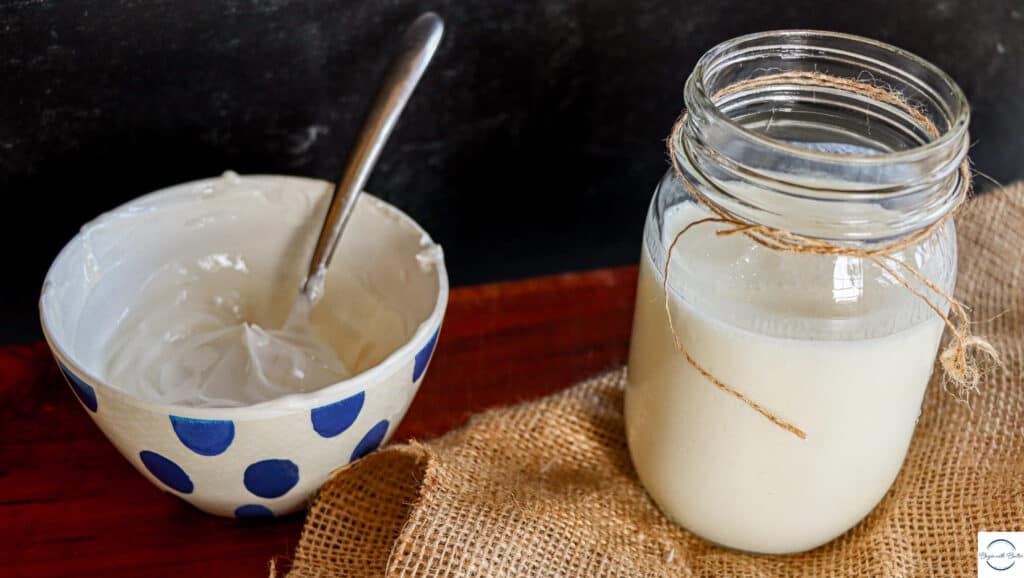
I wanted to share these four with you today, to explain what you can expect from each type of liquid. I also wanted to share why I choose each of them during a recipe development process.
First: What Does Liquid Do In A Cake Recipe?
The type of liquid that you use in a recipe is a really important choice. The liquid that you choose will impact the moisture, protein, fat and acidity levels of your cake. Ultimately, these things will affect the taste of your cake!
Moisture
The moisture level of a liquid refers to the percentage of water in that liquid. This is important because the moisture (water) content of your baking liquid impacts the mouthfeel (texture) of your cakes. A higher moisture content typically means a richer, more satisfying mouthfeel and a lower moisture content typically means a more crumbly, drier texture.
Friends. This does not mean to take it upon yourselves to add more liquid than a recipe calls for. Too much moisture in any baked good means mush.
What this does mean is that different liquids have different moisture percentages, so using a liquid that has a higher moisture percentage per cup will generally mean a more moist end result.
I still hate the word moist (????) but it’s unfortunately the best option here.
Protein Level
The protein level in your liquid can impact the texture of your finished product. Similarly to flour, high-protein liquid contributes to the structure of your cake; more protein = more structure = tougher and more chewy cakes.
Achieving the perfect texture in a cake is a delicate balancing act. Too much protein, not properly balanced against tenderizing agents (like active cultures) will mean tough cake. Not enough protein and you once again arrive at mush, because there is not enough strength to support the other ingredients.
Fat Content
Different liquids also have varying fat contents. And, just like eggs, a higher fat content liquid will add a more luscious texture and rich taste to your baked goods.
This is the reason why recipe writers (myself included) will go to great lengths to remind you to use full-fat liquids in your baked goods.
Acidity Level
Every ingredient in your cakes is either acidic, basic (alkaline), or neutral. Liquids can be any of the above, and this is important because the acidity of your liquid will determine which leavening is appropriate for your cake. Several of my most commonly-used baking liquids are “cultured”, which means that they contain live bacteria and are therefore acidic.
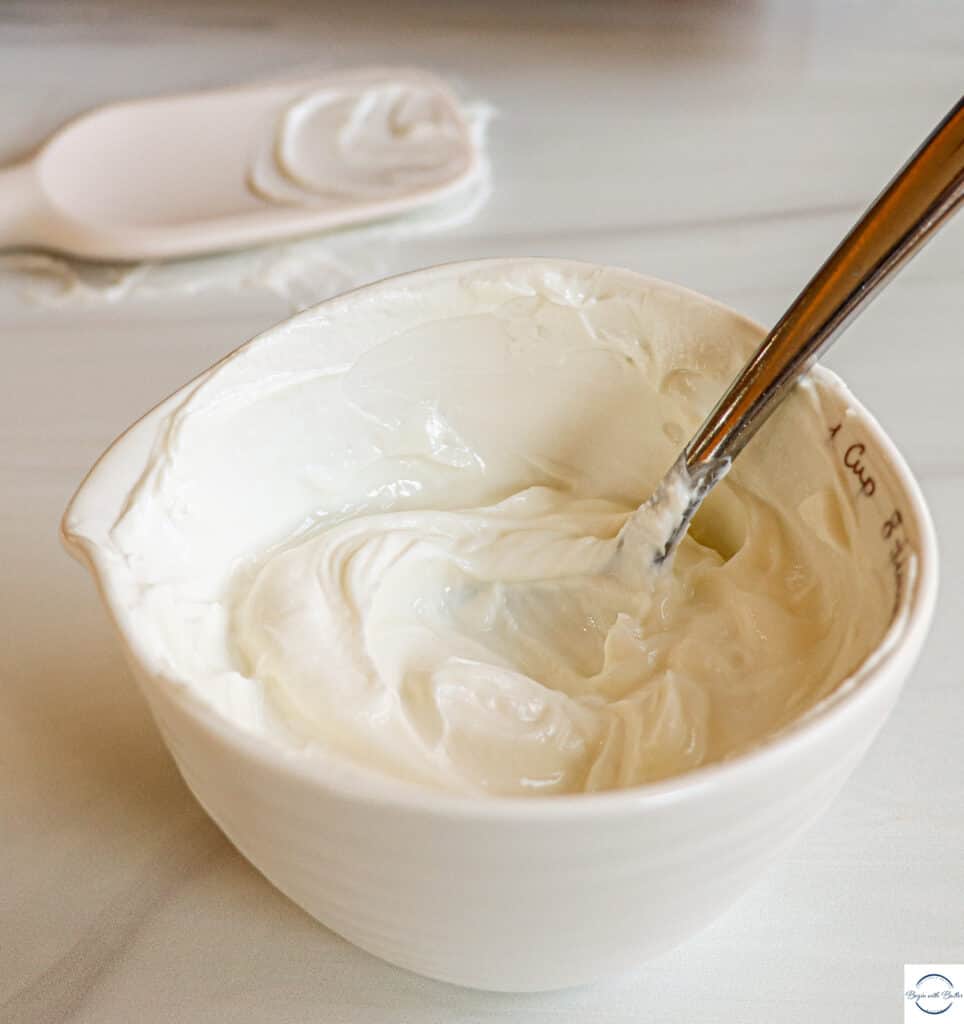
I tackled the important differences between baking powder and baking soda in this compelling, must-read article, but for the sake of this article, liquids that are acidic require baking soda, and liquids that are neutral require baking powder.
Taste
Different liquids will also impact the taste of your baked goods. For cultured liquids (buttermilk, sour cream and Greek yogurt), you can expect varying degrees of tangy flavor in the finished product. With whole milk, you can expect a neutral taste.
How Do I Choose Which Liquid to Use?
A common question that I’m asked all the time is how I choose which liquid I’m going to use in a specific recipe?
My answer is going to be deeply unsatisfying, but I will share: I imagine the mouthfeel and taste that I want to end up with in a specific cake and I work backwards. That’s right! Good old reverse engineering and testing, with a chaser of baking science for the win!
Whole Milk
Whole milk is a great liquid to use in cakes when you want a more delicate flavor. Coming in at 3.25% milk fat, whole milk is great for adding wonderful texture to your cakes without adding a tangy punch of flavor. Whole milk allows other, more subtle flavors to shine, while cultured liquids might compete with those flavors.
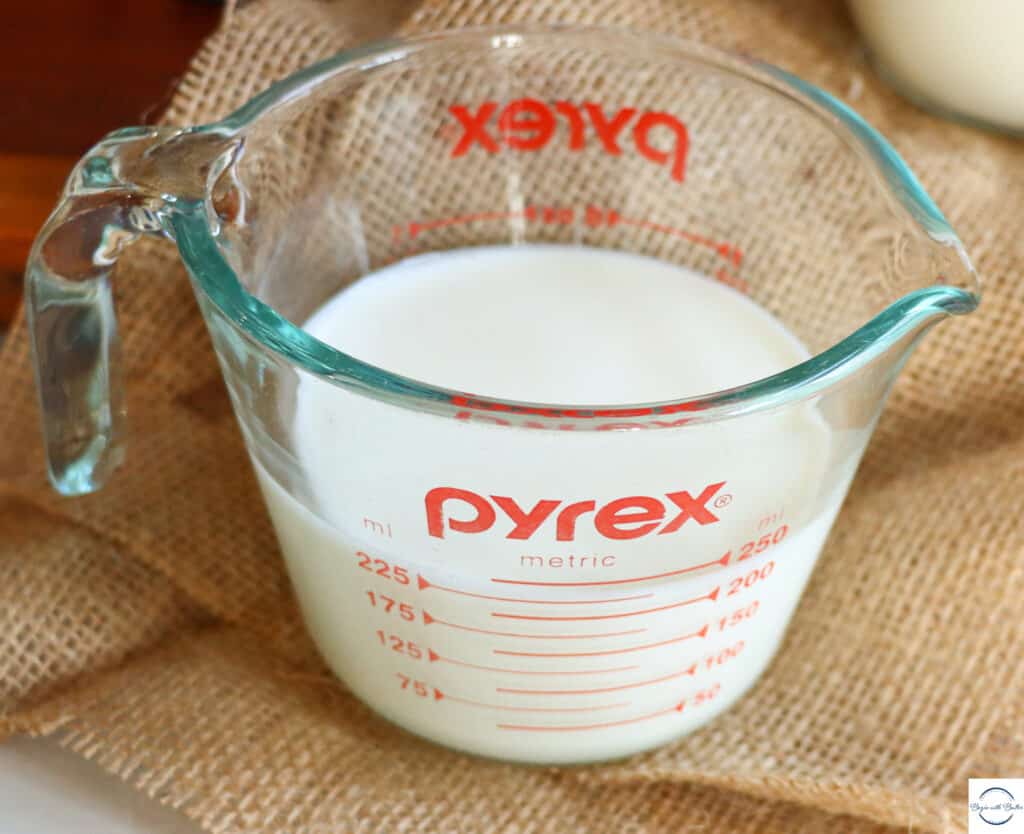
One cup of whole milk contains about 8 grams of protein and has a moisture content of about 87% water. This means that whole milk will contribute to a delicate, pleasantly moist and well-structured crumb on your cake. Think light (but well-defined), melt-in-your-mouth crumbs and that’s what you can expect!
If you’re using whole milk in a recipe, you’ll want to use baking powder. Whole milk is a barely-acidic ingredient (it has a typical pH around 6.7, so it is extremely close to being neutral), and it is not acidic enough to activate baking soda. The proper leavening, then, is baking powder!
How I Use Whole Milk: Whole milk is an amazing liquid for vanilla cake recipes, or for chocolate cake recipes that use Dutch process cocoa powder (like my Ultimate Chocolate Cake recipe!).
Buttermilk
Buttermilk is milk with added cultures. These cultures create a wonderfully creamy, acidic, thick milk that is absolute perfection for baked goods. Buttermilk weighs in at somewhere between .5 and 1.5% milk fat, which is slightly less than the aforementioned whole milk. Using buttermilk instead of whole milk means that your baked goods will be ever-so-slightly less rich. This is not usually noticeable, however, and it can be easily overcome with other recipe tweaks.
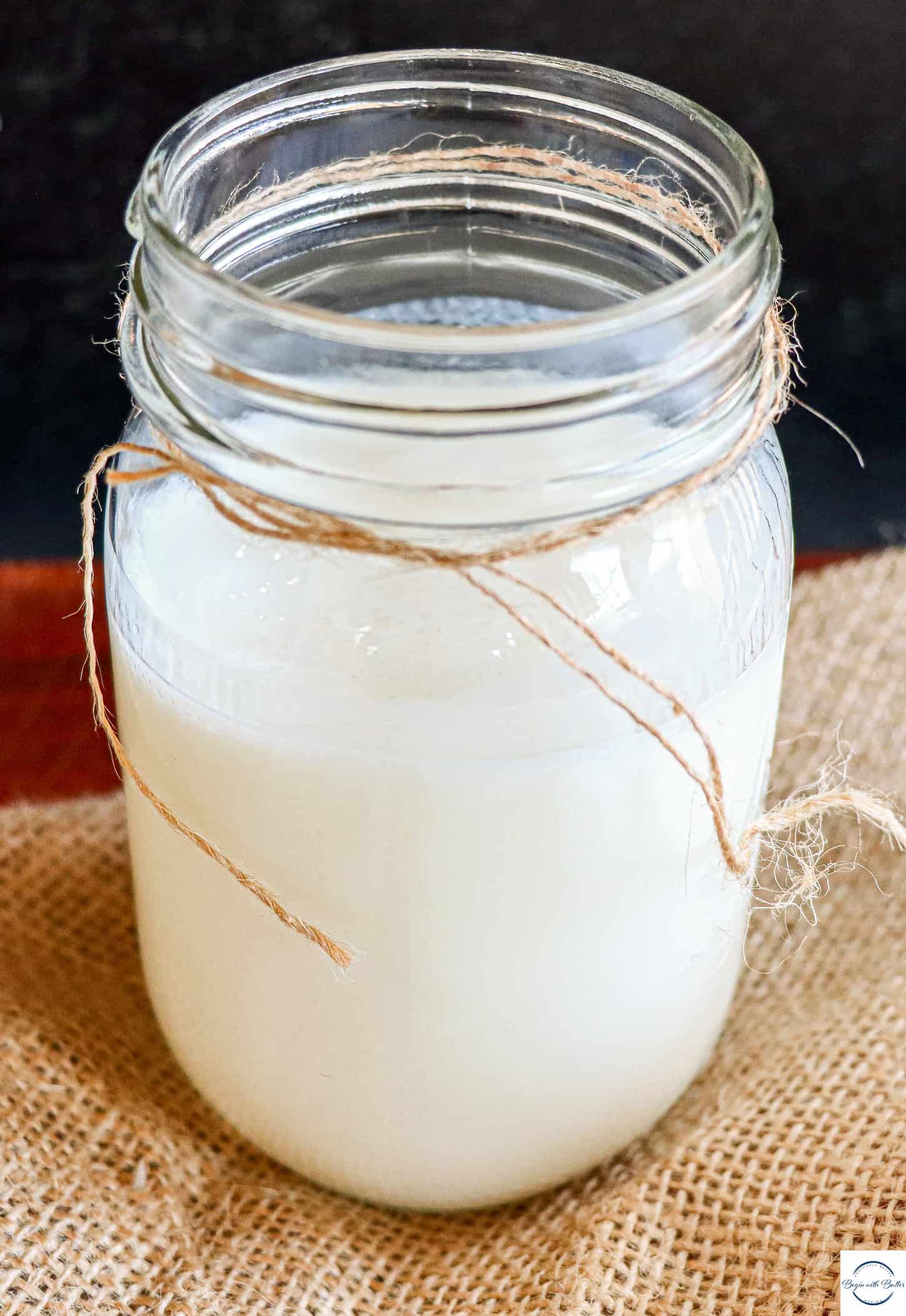
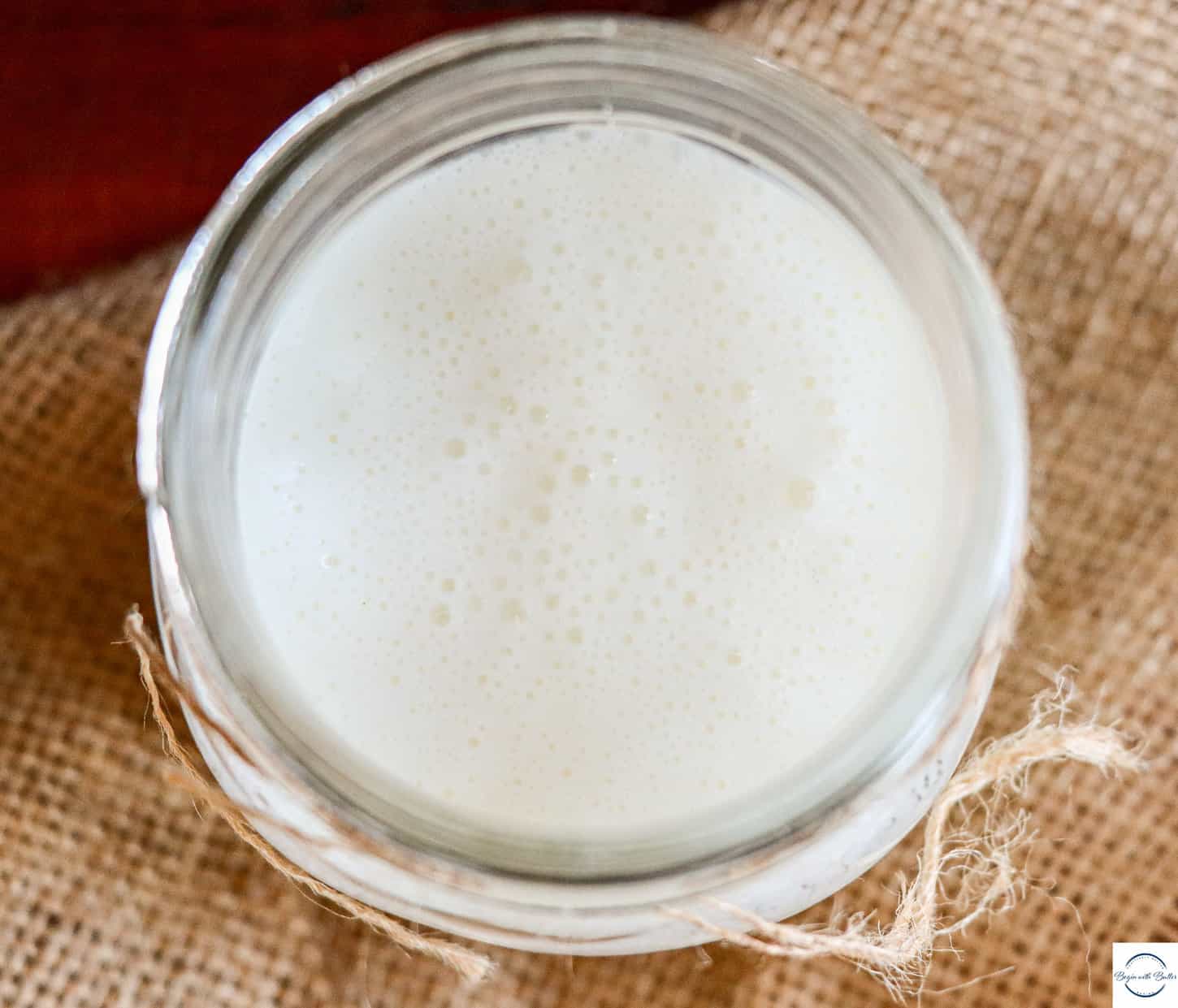
Buttermilk’s trademark characteristic is a slightly tangy flavor that it imparts on cakes. The active cultures in the buttermilk add a tangy flavor that you cannot find in whole milk.
The added cultures make buttermilk an acid, which means that you should use buttermilk in recipes that call for baking soda. Baking soda is a base, which means that it needs the added acid from buttermilk in order to make a cake rise.
Also of note: buttermilk has a protein content of 8 grams (equivalent to whole milk) and a water content of 90%. This means that, from a texture standpoint, you can still expect a well-defined gluten structure with a moist crumb.
How I Use Buttermilk: I use buttermilk as a default in pound cakes. It helps me achieve the perfect pound cake crumb; the walk-around-with-a-piece-of-cake-in-a-napkin-and-not-drop-a-crumb crumb. ????
Sour Cream
Sour cream is similar to buttermilk, in that it is cultured, but sour cream is cultured cream and has a significantly higher fat content. While buttermilk is somewhere between .5% and 1.5% milk fat, sour cream clocks in at around 20% milk fat!

The cultures in sour cream mean that it will again have a tangy taste to it. The tanginess isn’t enough to overpower the other flavors in your cake; to me, sour cream enhances the flavors of other ingredients and makes them really pop.
With sour cream, it’s all about the mouth feel. With a low protein content (4.8 grams per cup) and a lower water content (73%), sour cream creates a rich, dense and more loosely defined crumb. This, combined with all of that additional fat, creates a super rich texture that just melts in your mouth.
My Snickerdoodle Pound Cake is a perfect example of a cake that has a potent flavor profile (the cinnamon and sugar is extremely prominent). Those flavors are boosted by the acidic sour cream, and the high fat content gives it the most luscious texture. It’s truly an experience.
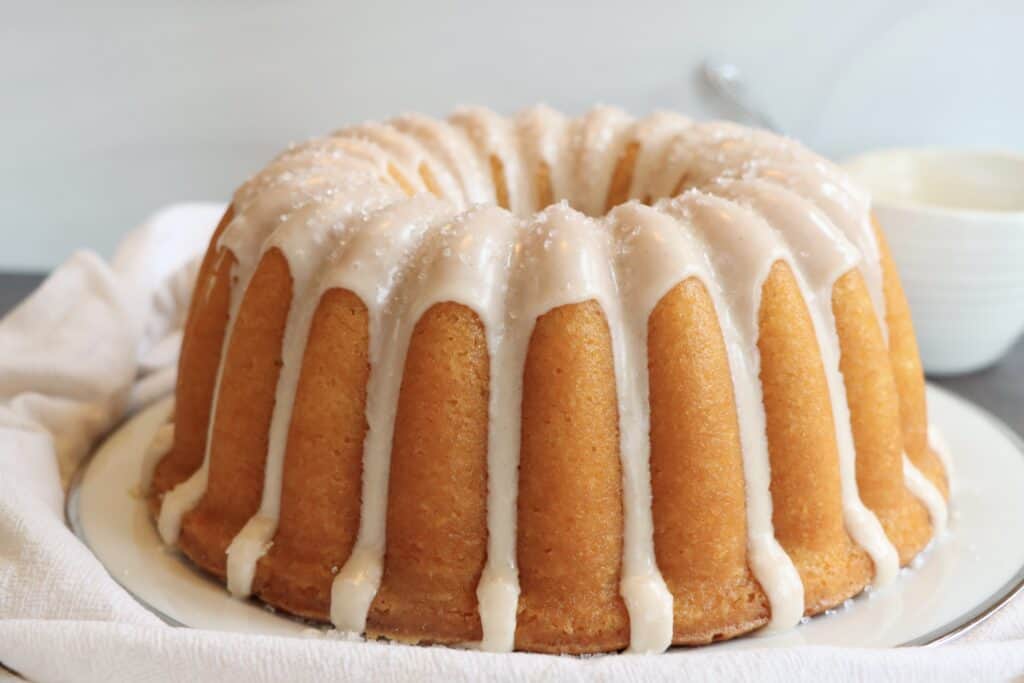
How I Use Sour Cream: I use 100% sour cream in pound cakes when I need to achieve that very rich, very dense texture and I have strong flavors to showcase. If I want a light-but-still-rich crumb, but still want to take advantage of the high fat content of sour cream, I will mix sour cream with whole milk, usually in a 75/25 ratio.
Sour cream is also a great idea for cakes that have heavy add-ins, like fruit or chocolate chips. Those things tend to sink to the bottom of cakes unless they’re coated in flour, but they’ll stay more buoyed in a more dense batter with sour cream.
Greek Yogurt
And then there was Greek yogurt. Greek yogurt is cultured milk, triple strained to remove as much water as possible and achieve that famous texture.
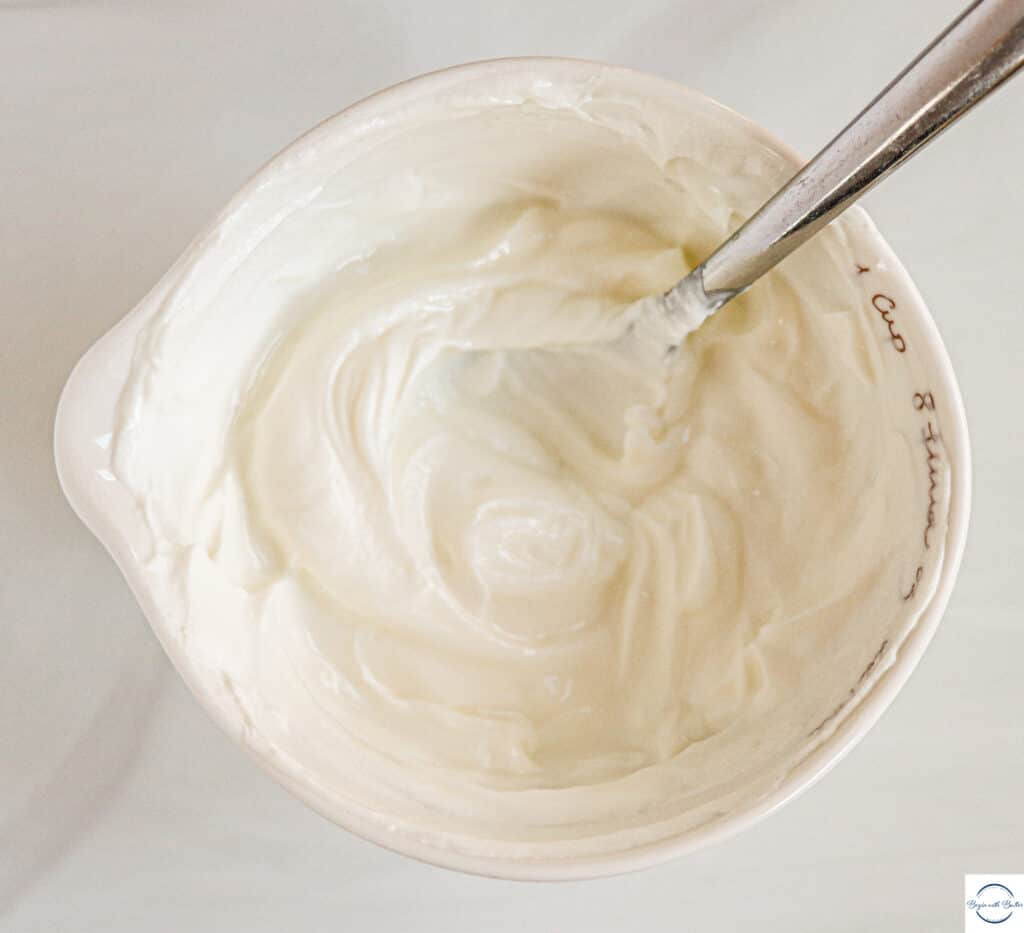
The full-fat Greek yogurt that I use is 5% milk fat, which gives it the second-highest milk fat content of the bunch (because nothing can compete with sour cream). It also comes it at 9 grams of protein per cup, and it is 88% water. The culturing process makes this another acidic liquid for baking. On paper, it is the most balanced baking liquid.
The high milk fat content means that you can once again expect a very luscious crumb. The high protein content means that you can expect a very well-defined crumb. The 88% water content means that the finished product will be moist, and the cultures mean that this is again a proper candidate for baking soda that will impart a slight tangy taste on your finished product.
How I use Greek yogurt: Greek yogurt is absolutely perfect for muffins and breakfast loaf cakes. It has a unique scientific profile that’s great for high-rise, moist and medium-crumb cakes. It’s also another great liquid to use if you’re adding fruit, nuts, or chocolate chips to a cake batter, since it again creates a more dense batter that won’t allow those things to slip to the bottom.
Other Liquids I Use
While these are the most common liquids that I use, sometimes I play with other ingredients. When I’m feeling really fancy, I’ll add either crème fraîche or ricotta cheese to my cakes. They are an experience, to be sure, and they are worth every expensive penny.
My amazing Lemon Meringue Pound Cake is an example of a ricotta-based cake that I LOVE to make. With ricotta in the batter, lemon curd swirled throughout, and a topping of scratch meringue on top, it’s…an experience.
Note: for lemon curd, I use this one from my friend Cheryl at Bakes by Brown Sugar. It’s AMAZING!
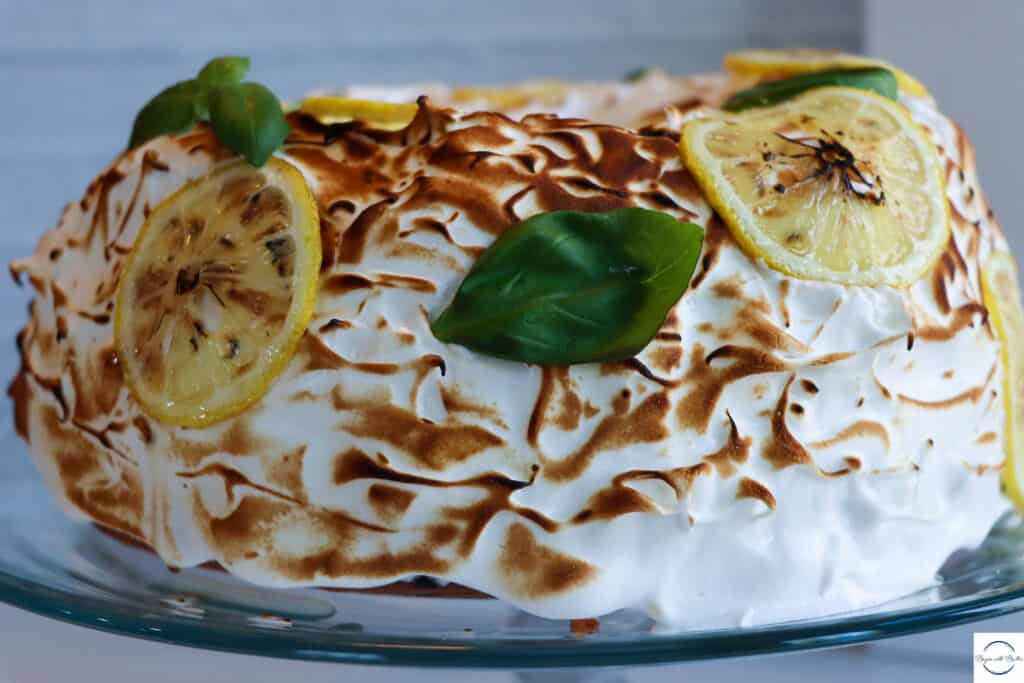
I truly hope that you’ve found this article helpful! Are there any other liquids that you love for baking? Let me know in the comments, below!
See you soon!

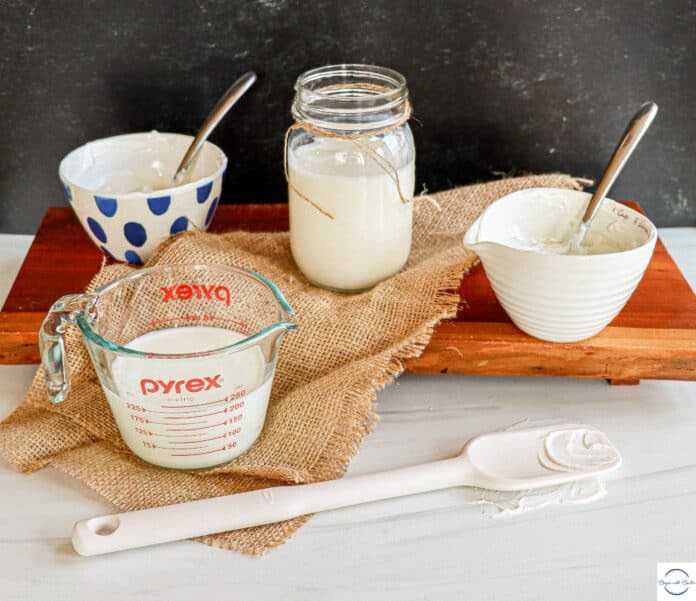

I’m so mad haha I just typed out a whole comment about some recipes I’ve been working on and was almost done when the page reloaded…. lol
Basically – thank you for writing this. I’ve always baked (GF), but this is a new season to develop recipes as I’ll be starting a business and would like to develop my own flavors! You’d be surprised how little helpful information there is on the ocean that is Google – it takes serious digging to find someone who knows what they’re talking about!